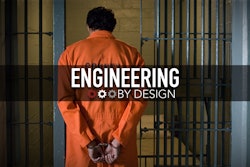E-Dermis Helps You Feel
Researchers at Johns Hopkins University have designed an e-dermis, or electric skin, that is made out of fabric and rubber with embedded sensors.
The work stems from a demand from amputees who are looking for improved sensory feedback. Essentially, they're asking to feel pain in their prosthetic limbs.
The researchers designed the e-dermis to be placed over the top of robotic or prosthetic limbs. The electric skin relays nerve signals to the person’s nerve endings - without any invasive procedures.
The researchers hope to soon use sensory feedback to give more than a sense of pain back to amputees. The work could also lead to the ability to feel texture and temperature.
The idea is that the sensations will not only help keep patients from damaging their prosthetic limbs, but also feel whole again.
It could also have some applicability for the perverse. For example, you could experience the pain of slamming your arm in the car door without breaking a bone, or lopping off a foot with an ax without losing any toes. Who knows? Maybe one day, it could be possible for men to feel the pain of childbirth.
Boeing Debuts Hypersonic Passenger Jet
This week, Boeing offered a look at the company's concept for a hypersonic passenger aircraft.
The company showed off renderings in Atlanta while at the American Institute of Aeronautics and Astronautics conference.
Boeing engineers have been working on several hypersonic concepts for both military and commercial applications for quite some time, and it may soon pay off. According to Kevin Bowcutt, Boeing's chief scientist of hypersonics, hypersonic passenger vehicles could be in the air in 20 years.
It will help solve one of the two fundamental problems with commercial air travel:
- The flights are too long, which the aircraft will solve by going Mach 5, or 3,700 MPH, and
- The entire experience of commercial air travel is terrible. This remains a work in progress.
I'd say that they should just try to make the internet faster, or usable, but KIT is on that one, and it likely won't take 20 years.
The craft will be on display in July at the Farnborough Air show.
DARPA’s New Wheels Turn Into Triangles While You’re Driving
The Ground X-Vehicle Technologies (GXV-T) program from DARPA's Tactical Technology office is working on creating the combat vehicle of the future. The idea is to make the vehicles safer and more mobile without simply adding more armor.
In May, DARPA held demonstrations at the Aberdeen Test Center to see what its partners have come up with. The most interesting concepts ditched the windows and one even reinvented the wheel.
Combat vehicles typically have limited visibility out of small windows to maximize soldier protection. So, some teams defenestrated the windows all together and moved to multiple sensor and camera technologies.
Honeywell's windowless cockpit uses 3D goggles, a head tracker and active window display screens that project real-time views of the terrain onto the opaque walls. It kind of works like a VR rig, although Honeywell has found a way to keep drivers from getting nauseous. In tests, drivers almost performed as well as drivers with full visibility. Raytheon BBN created the V-Pane, or virtual pane was similar, no windows, but sensors and cameras to create a 3D model that the driver uses to maneuver.
Of the many tech demonstrations, which I highly recommend checking out below, I was impressed by Pratt & Millers extreme travel suspension system that can extend six feet high while navigating steep slopes. But the show-stopper was the reconfigurable wheel-track from a team out of Carnegie Mellon.
The wheels can actually shape-shift in two seconds while the vehicle is in motion. The change occurs as the vehicle moves from hard to soft terrains.
This is Engineering By Design.






















